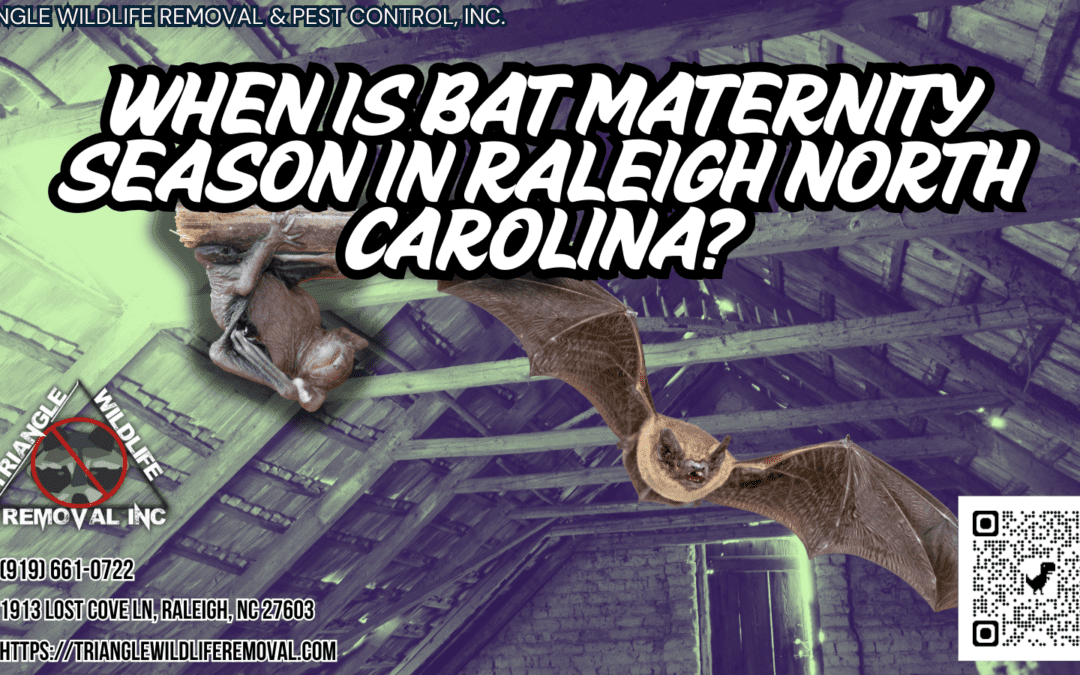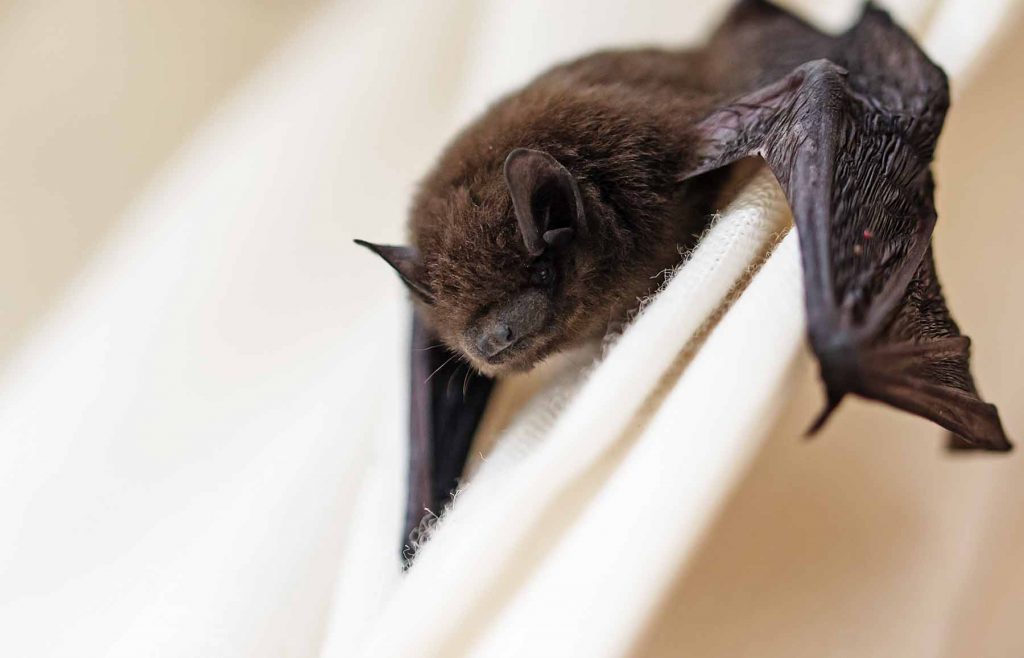Bats play a vital role in our ecosystem, and understanding their breeding patterns is crucial for their conservation. In Raleigh, North Carolina, many residents may wonder when bat maternity season occurs. This period is of great significance as it is when female bats gather in large numbers to give birth and raise their young. Factors such as temperature, food availability, and habitat conditions influence the timing of bat maternity season. In this discussion, we will explore the duration of this season, signs to look out for in Raleigh, and the importance of protecting bats during this critical time. Stay tuned to unravel the mysteries of bat maternity season in Raleigh, North Carolina.
Key Takeaways
- Bat maternity season in Raleigh, North Carolina occurs from May to August.
- Protecting bats during maternity season is crucial for their reproductive success and contributes to the overall ecosystem.
- The duration of bat maternity season is influenced by factors such as geographical location, climate, food availability, and the time it takes for young bats to become independent.
- Signs of bat maternity season in Raleigh include increased bat presence, swooping and diving behavior, chattering and squeaking sounds, increased bat activity near water sources, and the presence of bat droppings near roosts and maternal behavior.
Importance of Bat Maternity Season
The Bat Maternity Season in Raleigh, North Carolina plays a crucial role in the conservation and preservation of bat populations. During this period, which typically occurs from May to August, female bats gather in colonies to give birth and raise their young. This season is of utmost importance as it is a critical time for the survival and growth of bat populations.
Conservation efforts during bat maternity season are essential to ensure the well-being of these creatures. One key aspect of conservation involves minimizing disturbance to the bat colonies. Disturbances such as human activities or excessive noise can lead to stress and disturbance among the bats, affecting their reproductive success and overall population growth. Therefore, it is crucial to raise awareness about the impact of disturbance on bat populations during the maternity season and encourage responsible behavior around bat roosting sites.
Furthermore, conserving bats during their maternity season also contributes to the ecosystem as a whole. Bats play a vital role in pollination and insect control, helping to maintain a balance in the ecosystem. By protecting their roosting sites and minimizing disturbance, we can ensure the continued presence and contribution of bats to the environment.
Factors Influencing Bat Maternity Season
Conservation efforts during bat maternity season are crucial for understanding the factors that influence the timing and duration of this critical period for bat populations. Several factors play a role in determining when bat maternity season occurs and how long it lasts:
- Temperature and weather conditions: Bats are sensitive to environmental changes, and the timing of maternity season is often influenced by favorable weather conditions. Warmer temperatures provide optimal conditions for insects, which are the primary food source for bats, and this abundance of food prompts bats to mate and reproduce.
- Availability of roosting sites: Bats require safe and suitable roosting sites to give birth and raise their young. The availability of roosting sites, such as caves, trees, or man-made structures, can influence the timing of maternity season. If suitable roosts are scarce, bats may delay or forego reproduction.
- Access to food sources: The availability of insects, particularly during the early stages of bat maternity season, is crucial for successful reproduction. If insects are scarce or not yet abundant, bats may delay their mating and birthing activities until food sources become more readily available.
- Migration patterns: Some bat species migrate to different regions during certain times of the year to follow their preferred food sources. Migration patterns can influence the timing and duration of bat maternity season in specific locations.
- Human disturbance: Human activities, such as habitat destruction, roost disturbance, and pesticide use, can disrupt bat populations and their reproductive behaviors. Minimizing human disturbance is essential for the successful conservation of bats and their population growth.
Understanding these factors is vital for effective bat conservation and ensuring the long-term survival and growth of bat populations. By protecting their roosting sites, maintaining favorable habitat conditions, and minimizing human disturbances, we can help sustain healthy bat populations and the ecosystem services they provide.
Duration of Bat Maternity Season
During bat maternity season, the duration of this critical period for bat populations can vary depending on various factors. The length of the bat maternity season is influenced by factors such as geographical location, climate, and availability of food resources. In Raleigh, North Carolina, the bat maternity season typically lasts from early spring to late summer.
Bat maternity behavior plays a significant role in determining the duration of the season. Female bats form maternity colonies during this time, where they give birth and raise their young. The length of the season is closely tied to the time it takes for the young bats, known as pups, to grow and become independent. This process usually takes about six to eight weeks.
The availability of food resources also affects the duration of the bat maternity season. Bats rely on insects as their primary food source, and their activity is closely linked to insect abundance. If there is a decrease in insect populations, the bat maternity season may be shorter as bats may struggle to find enough food to sustain themselves and their young.
Signs of Bat Maternity Season in Raleigh
One of the noticeable signs of bat maternity season in Raleigh, North Carolina, is the increased presence of bats in the evening sky. As the sun sets, these nocturnal creatures take flight, providing a mesmerizing spectacle for onlookers. Here are some signs that indicate the presence of bat maternity behavior and roosts during this season:
- Swooping and diving: Bats can be seen gracefully swooping and diving through the air, as they navigate their way to feeding grounds and back to their maternity roosts.
- Chattering and squeaking: The air is filled with the high-pitched chattering and squeaking sounds of bats communicating with each other. These social interactions play a vital role in maintaining the cohesion of the maternity colony.
- Increased activity near water sources: Bats require a steady supply of water, especially during maternity season. Look for increased bat activity near ponds, rivers, and other water sources as they quench their thirst.
- Presence of guano: Bat droppings, known as guano, can be found in and around bat maternity roosts. These droppings are a clear sign of bat activity and indicate the presence of a maternity colony.
- Maternal behavior: Female bats exhibit specific maternal behavior during this season. They can be observed nurturing and nursing their young, which are usually clinging to the walls or ceilings of the roost.
These signs are a testament to the vibrant bat population and the importance of bat maternity season in Raleigh, North Carolina. So, keep an eye out for these fascinating creatures during this time of year.
Protecting Bats During Maternity Season
As we observe the mesmerizing spectacle of bats in Raleigh, North Carolina during maternity season, it is crucial to ensure their protection and preservation. Bat conservation plays a vital role in maintaining a healthy ecosystem and preserving the balance of nature. During maternity season, it is especially important to take proactive measures to protect bats and their roosting sites.
One of the key steps in protecting bats during maternity season is to avoid disturbing their roosting sites. Bats usually seek shelter in caves, trees, or man-made structures such as buildings or bridges. These roosting sites provide a safe and secure environment for bats to give birth and raise their young. Therefore, it is important to refrain from entering or disturbing these areas, as it can disrupt the bats’ natural behavior and have long-term negative effects on their population.
Additionally, it is essential to raise awareness about the importance of bats and their role in the ecosystem. Bats are beneficial creatures that play a crucial role in controlling insect populations, pollinating plants, and dispersing seeds. By educating the public about the value of bats and the threats they face, we can foster a greater appreciation for their conservation and encourage individuals to take action to protect them.

